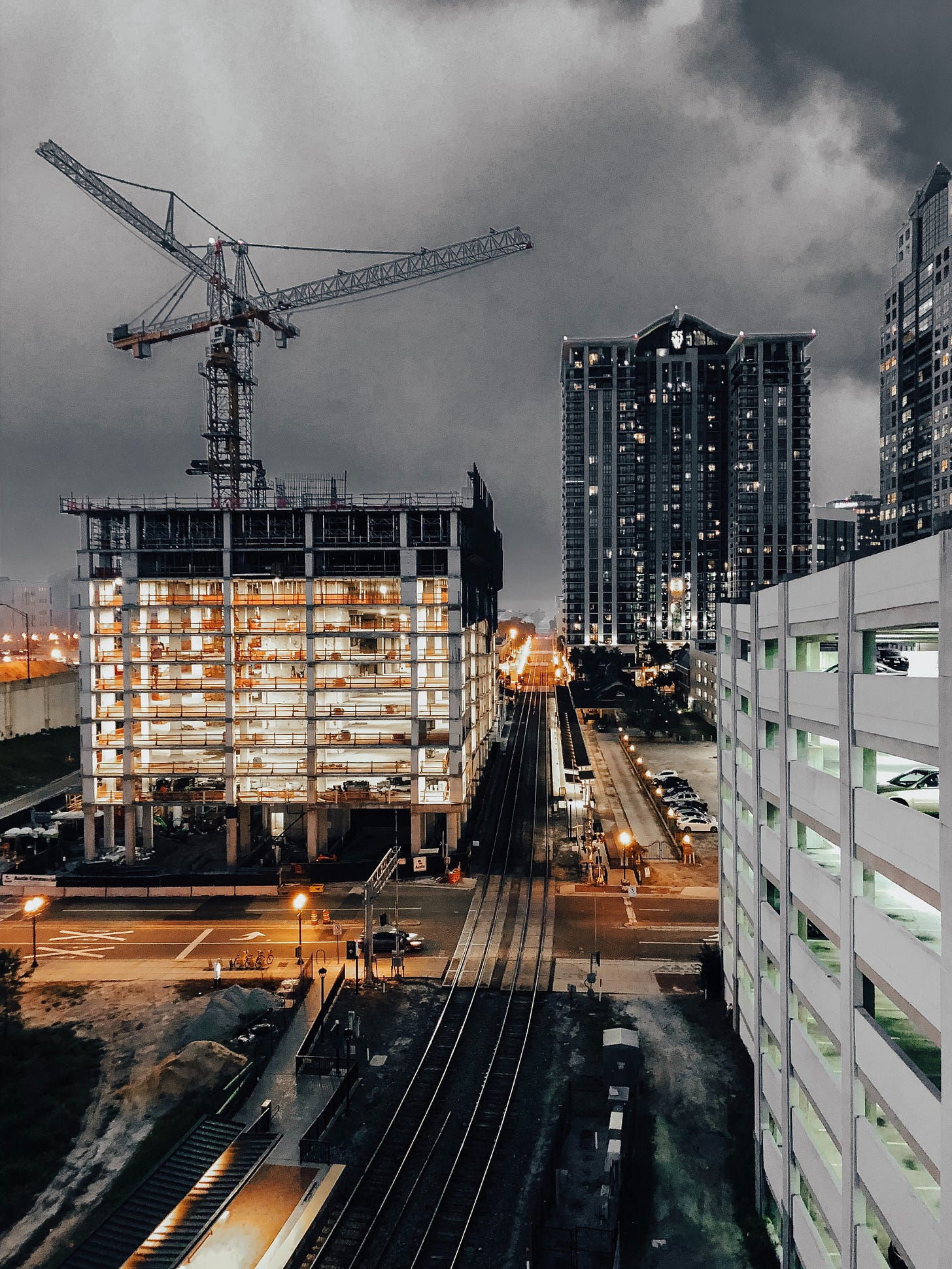Decarbonizing construction
Construction accounts for both GHG emissions and particulate matter pollution. Decarbonizing it could be a major economic gain.
Construction is one of those industries that undergirds a lot of modern life without many people ever thinking about except in terms of either nuisance from noise or disruption or in abstract terms, like news about cost overruns. But of course, everything needs to be constructed and it cannot be outsourced or offshored (not to be confused with constructing offshore oil platforms). As a result, construction is an important opportunity for decarbonization and improving air quality. According to McKinsey, the construction “ecosystem” – from raw materials to building operations – accounts for 25 percent of global greenhouse gas emissions and 14.5 percent of particulate matter pollution in cities. Construction also consumes water and produces waste.

Producing construction materials, like concrete, cement and steel are some of the biggest sources of emissions in the industry. Astonishingly, about half of the steel produced in the world is used in construction. Steelmaking technology has improved over the years, but continues to be energy intensive and as a globalized, mature, capital intensive industry, it can be vulnerable to price shocks and innovations can take time to be adopted.
Making cement, a key component of concrete, accounts for eight percent of CO2 emissions and up to three percent of the world’s energy is spent on it, according to Chemical and Engineering News. To make cement, a carbon-rich material known as limestone is heated to a high temperature, releasing CO2. To reduce the amount of carbon emissions, different materials can be used to make the cement instead of limestone, such as fly ash, a byproduct of burning coal that has accumulated over the years. At the current level of cement production, there’s 130 years of fly ash sitting around as an environmental hazard – however, the ash may be of insufficient quality or contaminated. Another material that could be used is slag from steelmaking. Another idea is to use materials recovered from electronics recycling to replace cement in concrete.
Alternatives to traditional cement also have promise. A clay called LC3 can be made into cement with a carbon footprint 40 percent smaller than conventional cement; another material, called CSA, produces 20 percent less carbon emissions and hardens faster. Finally, materials known as geopolymers are appearing in commercial products, lowering CO2 emissions by 70 percent. However, the alternatives still suffer from drawbacks that limit their adoption. For instance, CSA is more expensive and hardening faster can be a problem for transportation to construction sites.
One of the biggest impacts comes from before any concrete is poured or even the foundation is dug: everything about a building flows from its design and many modern, popular designs are not carbon friendly. For example, the use of floor-to-ceiling glass curtain walls has been very common in new office buildings since the 1950s – in fact it’s a signature of the International Style – but glass is really a terrible material for a wall, because it’s transparent: sunlight and heat pass right through it in the summer and heat radiates through it in the winter, so the HVAC system always has to run to keep the building comfortable, raising costs and consuming energy.
As long term capital assets, buildings also have lengthy lifespans and so it’s important that they be able to change based on economic conditions. The world is waking up to this rude fact in the wake of the Covid pandemic, which led to many businesses opting for fully remote or hybrid working conditions and so they need much less office space. The absence of workers has devastated downtown retail and restaurant businesses, not top mention downtown landlords. As a result there have been calls for downtown offices to be converted into housing, which would not only save the buildings from bankruptcy but help the small businesses with increased foot traffic. But converting a modern office building into apartments is easier said than done, according to Slate, thanks to large floor plans it’s hard for light to get in after adding interior walls while utilities need substantial work to connect to every apartment created. It’s also just expensive.
Improved materials, energy-efficient designs and planning for the possibility of conversion can help make buildings both reduce their carbon footprints and make cities more resilient.
